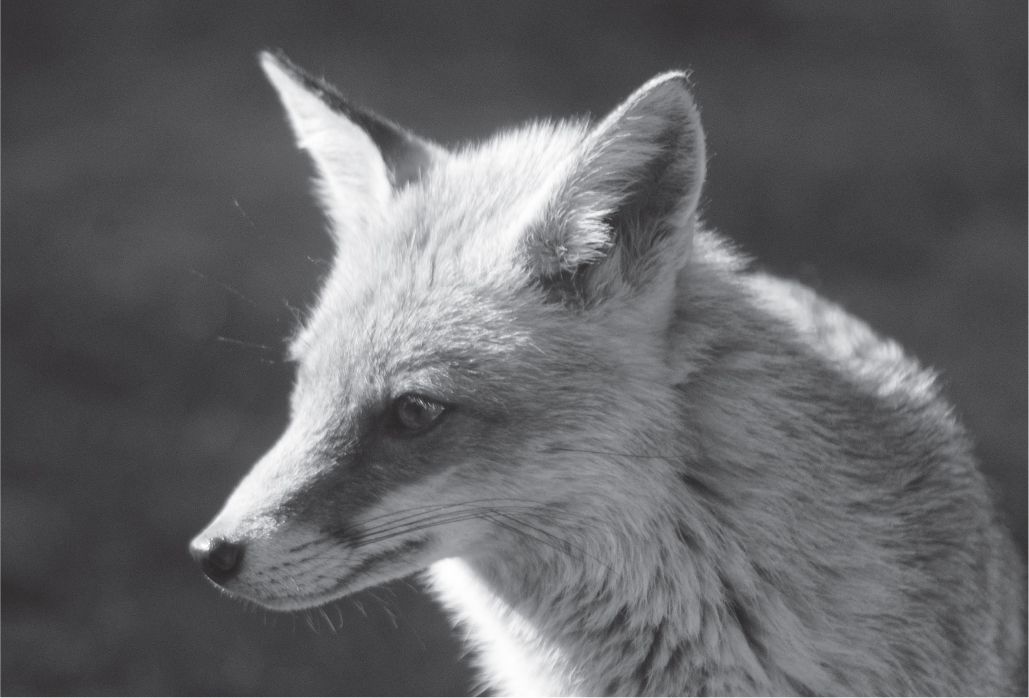
Полная версия
The Hidden World of the Fox

Foxes are often active in daylight where they are undisturbed.
In Britain, field voles tend to be diurnal – day active – if the temperature drops below freezing, and foxes, and indeed barn owls, naturally follow suit. Needless to say, if they find a person who regularly feeds them pork sausages in daylight, they will adapt their activity around that food source instead. I have also known several low-ranking foxes that opted for daytime travel to avoid confrontation with dominant individuals.
Radio-tracking has shown that the daily wanderings of a territory-owning fox fall into two distinct types. The first is a circumnavigation of its entire territory, and the second – and more common – is of visits to different parts of their range each night. Varying their journeys gives them the optimum chance of exploiting food resources; if they were to concentrate on the same field month upon month, it would eventually run dry of voles while the untapped pasture half a mile away is awash with them. It is worth adding that the enormous bounty provided by people who feed garden foxes has added a third trend: foxes who travel little and appear in sizeable numbers in specific sites every day.
Under more natural conditions, foxes tend to cross the landscape in a large-scale zigzag pattern. They are often religiously loyal to specific routes, wearing narrow paths into grass through repeated trampling. In the wilderness, they climb onto fallen tree trunks and walk down their full length as a kind of elevated track; in Britain, they occasionally exploit railway lines instead. Last year, I was shown some startling footage of a fox in Wales trotting briskly down a train rail hardly wider than a human hand, balancing like an expert on a tightrope.
Railways and foxes often occupy the same sentence. While human commuters frequently feel that our rail network is more of a hindrance than a help to travelling, it is commonly stated that our vulpine neighbours are transported by them. Not as passengers – although there are several credible accounts of urban foxes jumping on board public transport – but rather as walkers along the banks. Even at those moments when the Gatwick Express thunders past the East Croydon congestion at 100 mph, and on just the other side of Network Rail’s perimeter fence, millions of people shop, argue and check their phones, the embankments themselves remain one of the least disturbed environments in the city. It is often said that foxes first immigrated to London in the 1930s, the pioneers moving down railway lines into this new brave world full of human creatures.
But when talking of the arrival of fox in city, it is as well to remember that city has also travelled extensively into the traditional land of the fox. London has bloated massively over the last two centuries, and despite the best efforts of greenbelt campaigners, continues to do so. Many of today’s ‘urban’ foxes may be descended from ‘rural’ foxes whose habitat was suddenly turned into housing estates. Incidentally, records of foxes near towns in Finland date back to the medieval era, and their distinctive barks were heard in Tokyo in the ninth century. There is even some suggestion that foxes scavenged on abandoned scraps from humans as long ago as the Palaeolithic – the Old Stone Age.
Regardless, considerable research has taken place in recent years to establish the impact of railway lines on fox densities and movement patterns. But evidence that dispersing foxes, and indeed territory-owners on the hunt, are funnelled by the railways is also remarkably scant; radio-collared foxes have shown little preference for the train lines.
Taking the wider view, why would they? Humanity has proved tragically skilful in fragmenting the habitat of hedgehogs, toads and dormice, but foxes are much more capable travellers. They can and do cross roads, car parks and fences. Even the natural world’s topography has little impact; genetic sampling from Croatia has shown that they migrate freely across rivers and small mountains.
When not travelling or feeding, foxes require a suitable place to rest. This may be anywhere within their home range, even close to the territorial border. Foxes have more than one den, including sites that may only be used temporarily. Researchers in Polish farmland found that earths tended to be dug on steep south-facing slopes, with western exposure avoided, possibly due to the prevailing westerly winds. In suburban Britain, foxes often rest on greenhouse roofs or sunbathe in quiet alleys. I’ve found one stretched out contentedly on warm plastic in a narrow gap between a wall and a garage, peaceful and safe, despite being within metres of a major supermarket car park used by hundreds of humans each day.
BUT THE STRAND is crossed by thousands upon tens of thousands of people. Even at midnight, it is alive: lights on the arching stonework, music thumping from cars as they choke in bus-filled traffic jams. I’ve come back here because I want to better understand the miracle of foxes in a desert of towering grey rock. Friday night has spilled people upon the streets, shouting, selfie-taking, watching buskers batter their drums. More of them sprawl between the paws of the giant lions of Trafalgar, strangely drawn to the cold stone models of wild animals. Night itself seems defeated by the battle squadron of lights jumping upon these grandest of buildings, reflecting on the river, luring punters into shops. So it continues on the journey southwards: shuttered shops, drunken youths, urban cries and urban dreams.
There is a fox.
A male, all long limbs and thick brush, sits on a patch of grass under one of Brixton’s tower blocks, half illuminated by streetlight. He turns his head towards the car as we pass, watching, just like his kin in the silent and utterly wild Thar Desert.
Adaptability.
That, in essence, is the fox’s gift.
Конец ознакомительного фрагмента.
Текст предоставлен ООО «ЛитРес».
Прочитайте эту книгу целиком, купив полную легальную версию на ЛитРес.
Безопасно оплатить книгу можно банковской картой Visa, MasterCard, Maestro, со счета мобильного телефона, с платежного терминала, в салоне МТС или Связной, через PayPal, WebMoney, Яндекс.Деньги, QIWI Кошелек, бонусными картами или другим удобным Вам способом.




